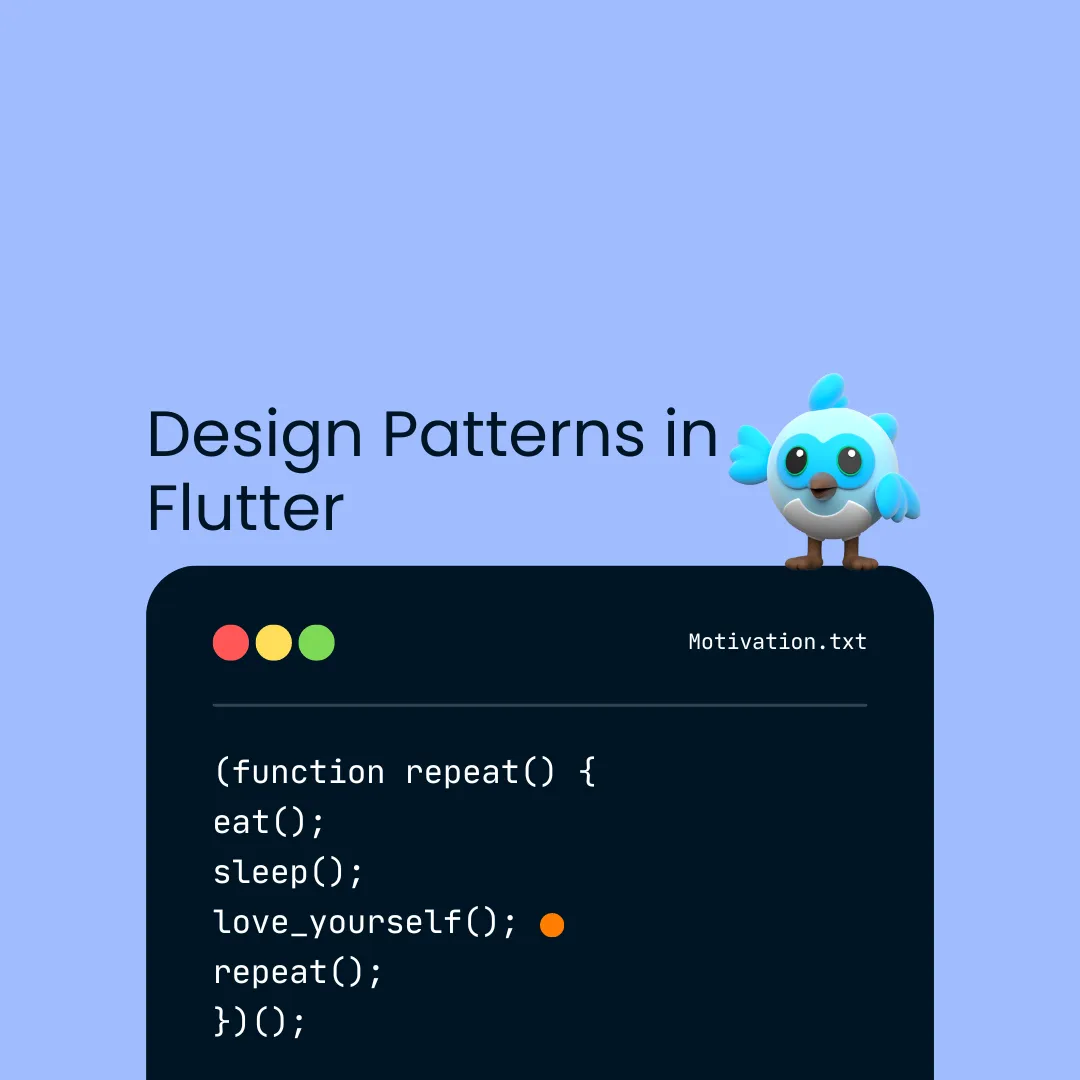In the ever-evolving landscape of mobile app development, Flutter has emerged as a dynamic framework that empowers developers to create stunning, cross-platform applications. As the demand for well-structured and maintainable code grows, the integration of design patterns has become crucial. In this article, we’ll delve into some of the most renowned design patterns in Flutter, enhancing your understanding of how they contribute to efficient mobile app development.

Flutter: A Game-Changer in Mobile App Development
Flutter, developed by Google, has quickly gained popularity for its ability to craft visually appealing apps for both iOS and Android platforms. The framework’s widget-based approach and Hot Reload feature streamline the development process, reducing development time and boosting productivity. As the Flutter ecosystem expands, the integration of design patterns becomes pivotal for creating scalable and maintainable apps.
The Power of Design Patterns in Flutter
Design patterns are tried-and-true solutions to recurring problems in software design. By adhering to these patterns, developers can enhance code readability, modularity, and reusability. Flutter design patterns provide developers with a blueprint for creating organized, efficient, and reliable codebases.
1. BLoC (Business Logic Component) Pattern
The BLoC pattern separates the presentation layer from business logic, offering a clear division of responsibilities. This pattern leverages Streams to manage data flow, enabling a reactive programming paradigm. By employing the BLoC pattern, developers can create highly interactive apps while maintaining a clean codebase.
2. Provider Pattern
Flutter’s Provider package simplifies state management by offering a more straightforward alternative to InheritedWidgets. The Provider pattern efficiently manages application state and data, ensuring consistent updates across the widget tree. This pattern reduces boilerplate code and optimizes app performance.
3. Singleton Pattern
The Singleton pattern ensures the existence of a single instance of a class throughout the application’s lifecycle. In Flutter, Singleton is frequently used to manage services, repositories, and other components that need to be accessed globally. By avoiding redundant object creation, developers can improve memory utilization and streamline resource management.
4. Observer Pattern
The Observer pattern facilitates communication between different parts of an app without tight coupling. In Flutter, this pattern is exemplified by the use of Streams and StreamBuilders. By decoupling UI components from the underlying data, the Observer pattern promotes maintainable and easily extensible code.
5. MVC (Model-View-Controller) Pattern
The MVC pattern segregates app components into three distinct categories: Model (data management), View (user interface), and Controller (business logic). Though not exclusive to Flutter, the MVC pattern can be applied to enhance code organization, particularly for larger applications.
Elevate Your Flutter Development
In the competitive world of mobile app development, mastering design patterns can make all the difference. By incorporating BLoC, Provider, Singleton, Observer, and MVC patterns, Flutter developers can create applications that are not only visually impressive but also well-structured, maintainable, and scalable. Whether you’re a seasoned Flutter developer or just starting your journey, embracing these design patterns will undoubtedly elevate your app development game.
Conclusion
In conclusion, Flutter’s popularity is undeniable, and its seamless integration of design patterns ensures that developers can harness its full potential. By adopting these design patterns, you can navigate the challenges of mobile app development more effectively, delivering outstanding user experiences while optimizing your development process.
Our favorite design pattern in Flutter is the BLoC (Business Logic Component) pattern. This pattern has truly revolutionized the way I approach mobile app development. Its separation of concerns between the presentation layer and business logic brings a level of clarity and structure to my codebase that is unparalleled. The use of Streams for managing data flow and enabling reactive programming has streamlined my development process, allowing me to create highly interactive and dynamic apps. BLoC pattern not only enhances code organization but also promotes code reusability, making it a must-have in my toolkit. So, the next time you dive into Flutter development, consider embracing the BLoC pattern for a more efficient and enjoyable coding experience!
Remember, a well-structured app and a good laugh go hand in hand in the world of programming. Happy coding 🙂




